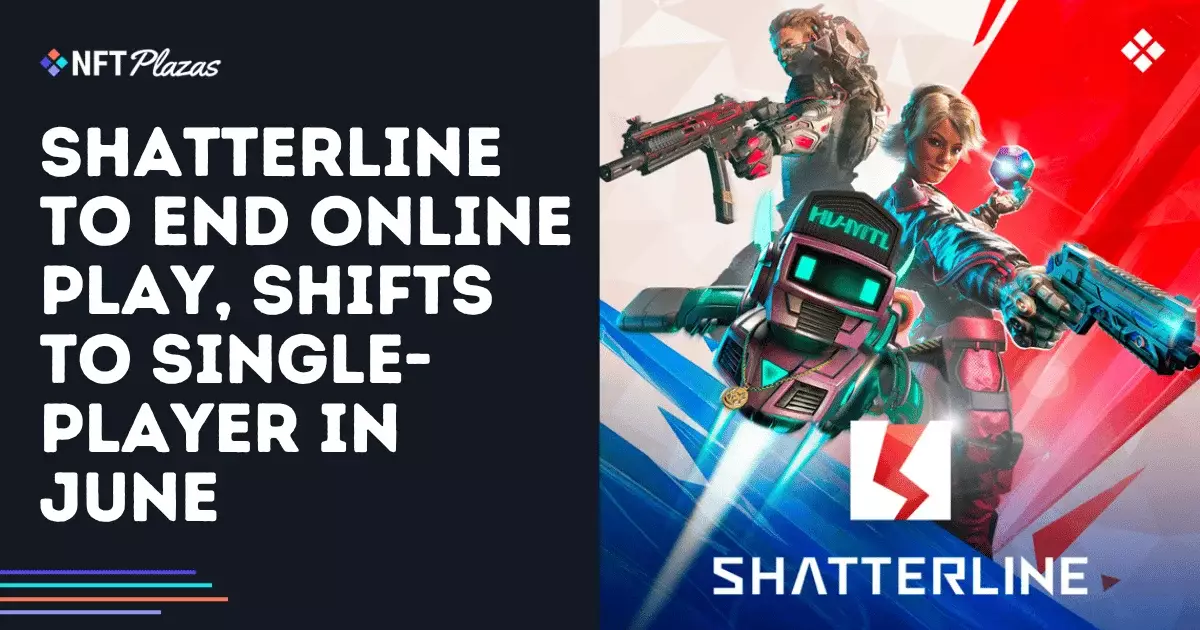Shatterline, once celebrated as a promising foray into the realm of NFT gaming, recently announced its decision to exclusively transition to single-player modes after shutting down its online multiplayer servers. This decision highlights a troubling trend in the gaming industry where ambitious projects crumble beneath the pressures of player engagement and monetization difficulties. Instead of unveiling the game’s potential in a cooperative or competitive environment, Frag Lab is now shifting focus to a pay-to-own model, a clear admission of defeat against the growing tides of consumer indifference.
The transition emphasizes a crucial lesson: even well-crafted games can falter if they underestimate player desire for community interaction. While the gaming landscape is undeniably shifting, with solo experiences gaining traction, players still crave meaningful multiplayer connections. Shatterline’s decline is not just a financial miscalculation—it’s a stark reminder that community engagement is invaluable.
Financial Pitfalls of Live-Service Models
Frag Lab’s decision to disable in-game purchases underscores one of the significant pitfalls of live-service models that have dominated the industry. A gaming ecosystem reliant on continuous revenue from in-game transactions without sufficiently engaging its player base is doomed to fail. Shatterline’s unfulfilled promise of sustained multiplayer experiences led to dwindling daily active users, fatally undermining the very foundations upon which its monetization strategy was built.
As players pulled back from in-game purchases leading to mounting financial desolations, it became clear that developers need to rethink their strategies. Relying on microtransactions can alienate players when the core gameplay fails to deliver the desired experience. Shatterline’s pivot away from free-to-play suggests their recognition that consumer dissatisfaction can swiftly turn into a lack of financial investment.
The Lifecycle of Blockchain Features
Interestingly, players’ sentiments regarding Shatterline’s integration of blockchain technologies were enigmatic at best. While some embraced the potential for NFTs and financial ownership, others critiqued the tech as fundamentally misaligned with the game’s ambition. This contradiction raises vital questions about how blockchain features will evolve within the gaming ecosystem moving forward.
As Shatterline embraces a model free from the burdens of online multiplayer, the future of its blockchain components remains ambiguous. If the core user base views these technological features as a hindrance rather than a benefit, then removing them entirely may become the next logical step, reflecting a pivot towards more traditional gaming paradigms.
Future Prospects and Single-Player Focus
In a twist of irony, Shatterline’s transformation into a single-player experience might actually serve as an opportunity for the developers to hone in on their craft, creating engaging content that resonates with users without the weight of online competition. While they retreat from multiplayer, there is potential for innovative storytelling and refined mechanics that could restore players’ faith in the game.
However, such a transition requires not only intent but also robust execution. Developers must focus on delivering a superior single-player experience that validates the change. This could be Shatterline’s chance to reclaim its identity in a saturated market—all while illustrating the harsher realities of gaming entrepreneurship where player sentiment reigns supreme. Whether this new direction can recapture the hearts of disenfranchised players remains an open question, but the lessons here are crucial for future endeavors in the gaming world.


Leave a Reply